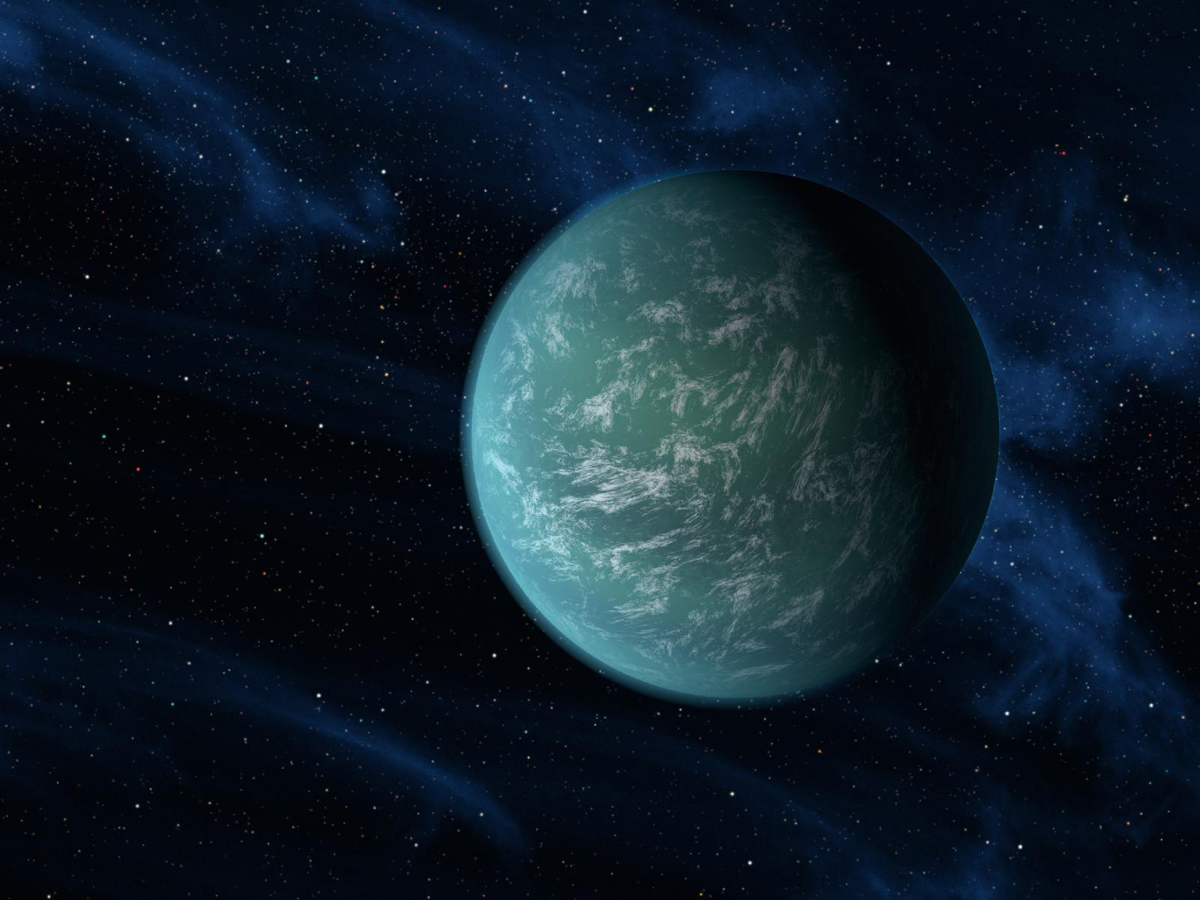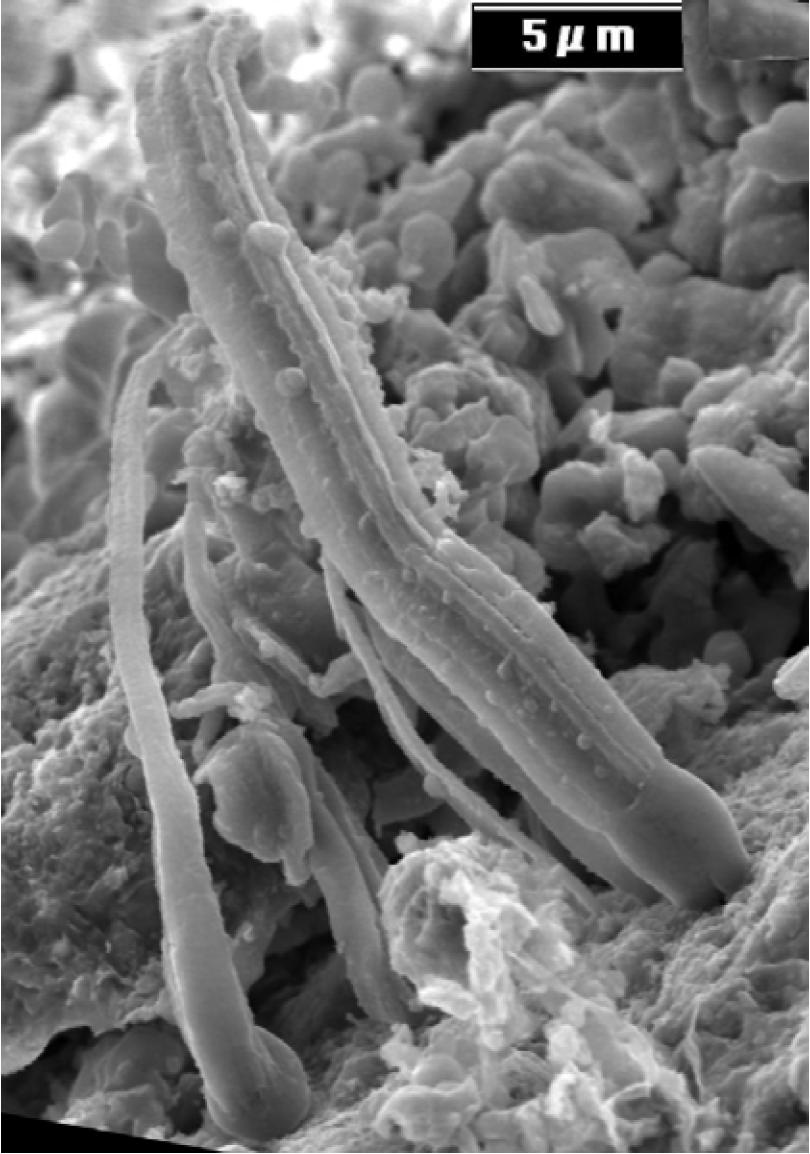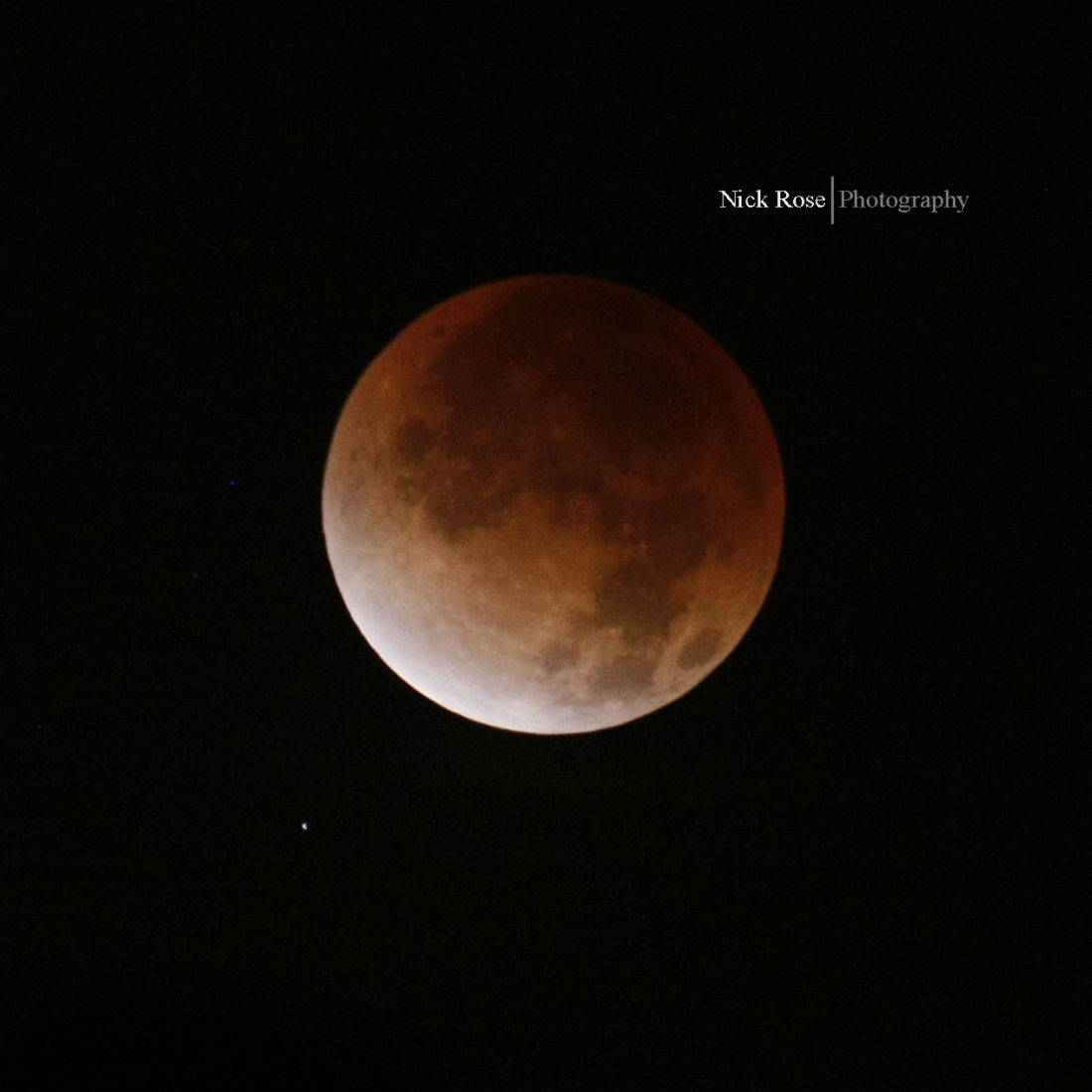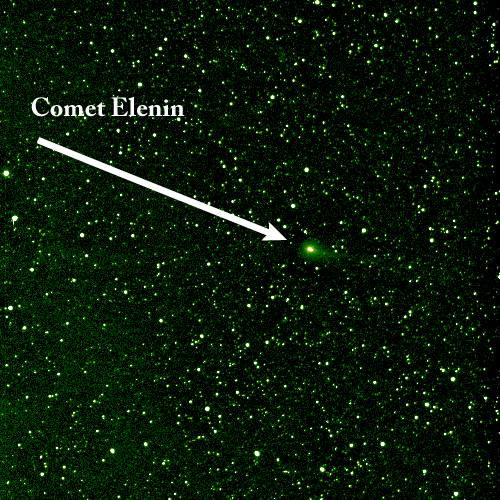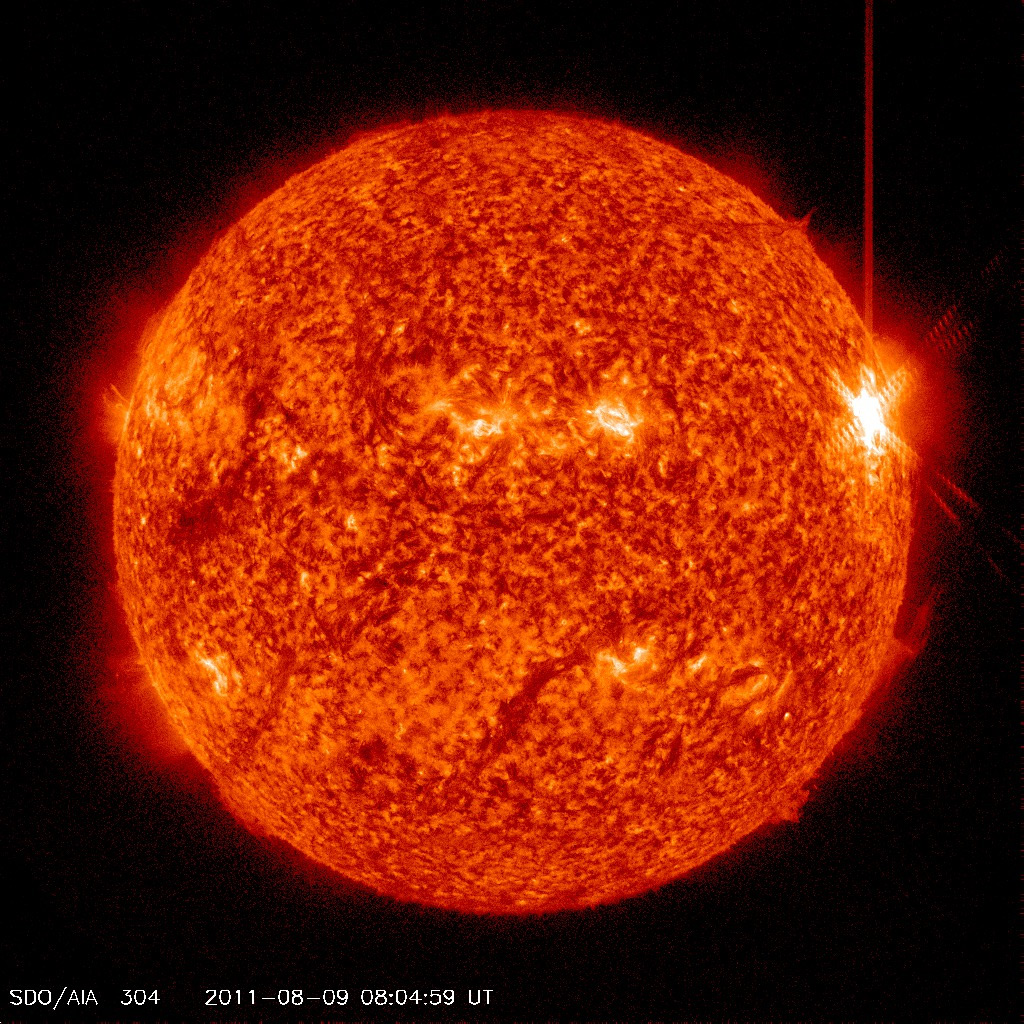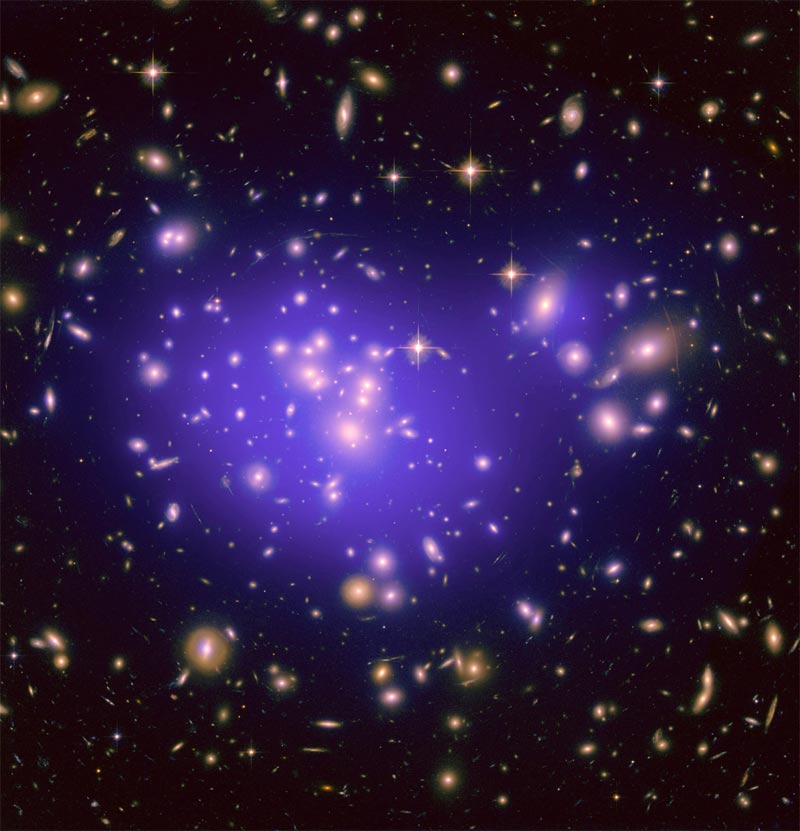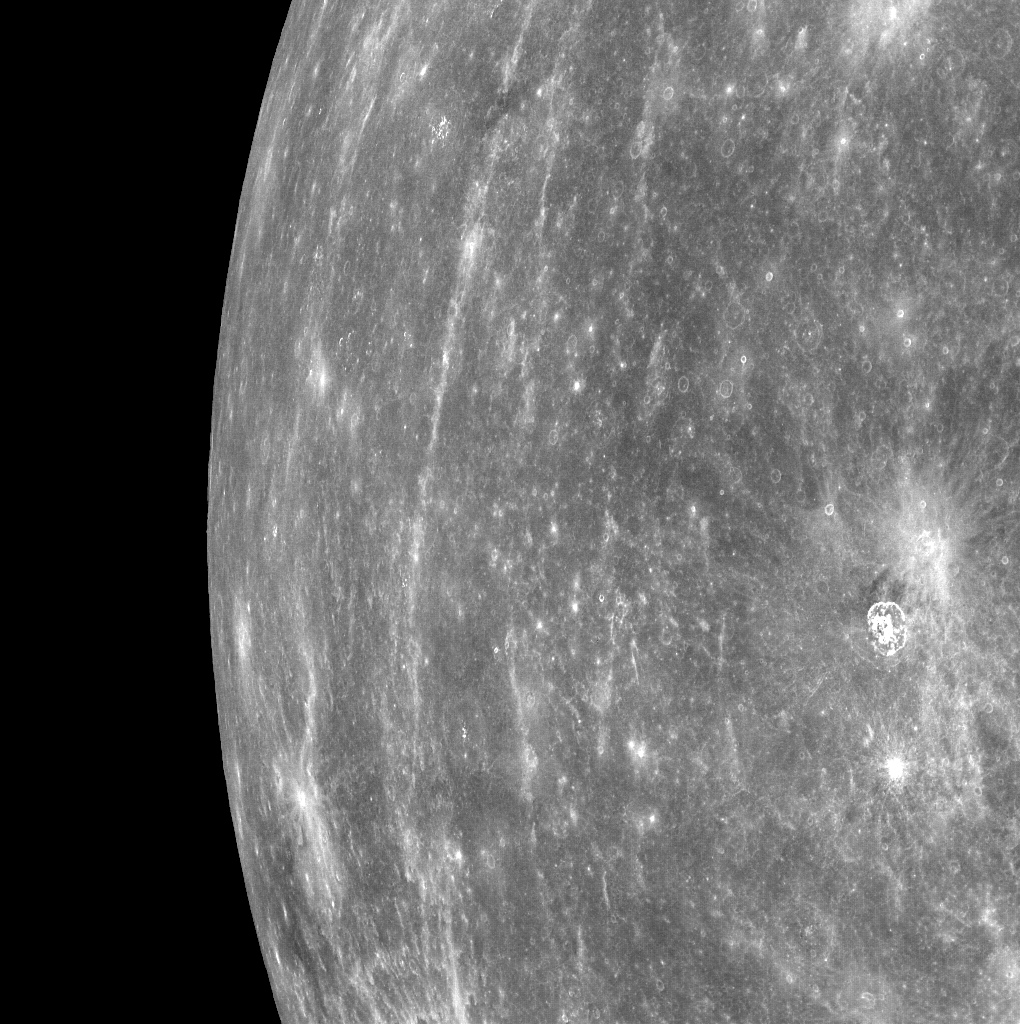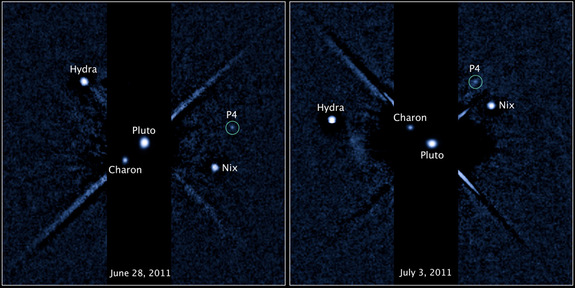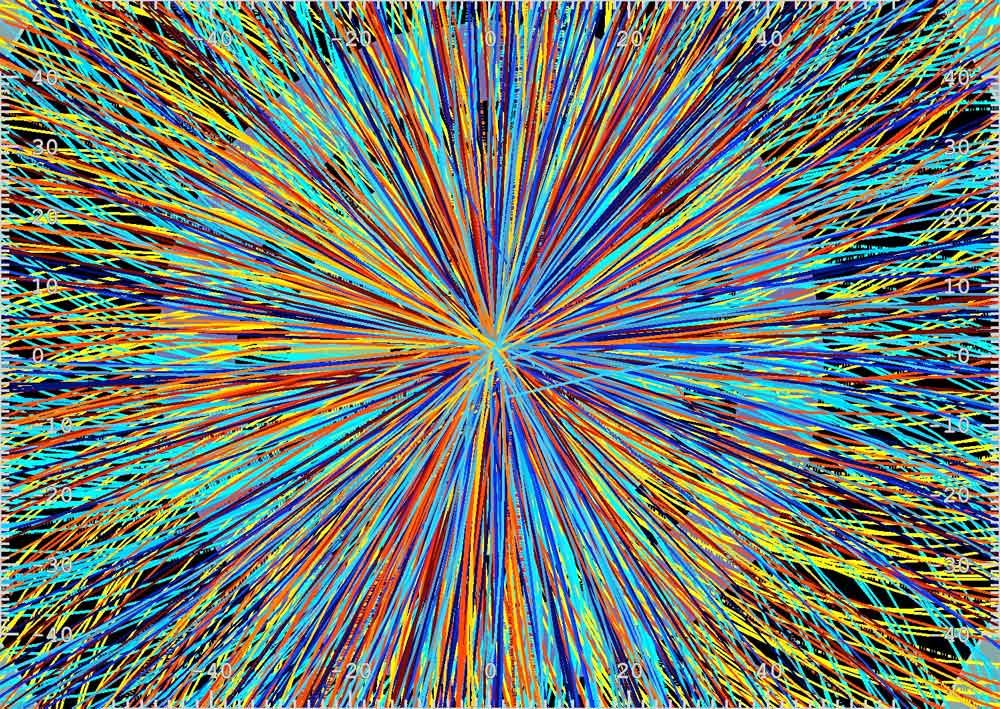11 Best Astronomy Stories of 2011
Year in Review
From the detection of potentially habitable alien planets, to the discovery of a new moon around Pluto and jaw-dropping eclipses, astronomical research in 2011 made extraordinary strides and raised tantalizing questions for the future.
Here's a look at the 11 best astronomy stories of 2011:
Ongoing Search for Alien Life
In early March, a study published in the Journal of Cosmology ignited a controversy over the possible detection of alien life in meteorites.
Astrobiologist Richard Hoover of NASA's Marshall Space Flight Center in Huntsvilla, Ala., used scanning electron microscopes to analyze slices of carbonaceous meteorites that fell to Earth from space. In his study, Hoover claimed to have detected "filaments" and other features that resemble microbes in the meteorites. [5 Bold Claims of Alien Life]
The study was quickly criticized by other scientists, who discredited the research and said that the findings did not amount to convincing evidence.
In a less controversial announcement on Dec. 7, scientists presented findings from the Mars rover, Opportunity, that amounted to the best evidence yet that water flowed on the planet long ago. Opportunity discovered a thin, bright mineral vein along the rim of the huge Endeavour crater. According to scientists, the mineral is almost certainly gypsum that was deposited by liquid water billions of years ago.
NASA launched its newest mission, the Mars Science Laboratory (MSL), to the Red Planet Nov. 26. When the car-size rover Curiosity touches down on Mars in August, it will likely help researchers gain a better understanding of the planet and its environment.
Gains Made in Search for Killer Space Rocks
In September, a NASA study was released that found fewer potentially dangerous asteroids orbiting Earth than was previously thought. The discovery significantly lowered the number of medium-size asteroids near Earth to 19,500, which represented nearly a 50-percent drop from initial estimates.
The study's findings suggested that the threat to Earth by dangerous asteroids may also be somewhat less than previously thought. But scientists also said thousands more of these asteroids remain to be found. [Photos: Asteroids in Deep Space]
Asteroids, Oh My!
After launching in 2007, NASA's Dawn spacecraft arrived at the asteroid Vesta in July to kick off a yearlong study of the giant space rock. Since its arrival, Dawn has already beamed back some of the clearest views yet of the huge, battered asteroid, including images of massive depressions and a huge mountain inside an expansive crater.
Vesta is the second-most-massive object in the main asteroid belt between Mars and Jupiter. After spending a year at Vesta, Dawn will travel to the asteroid Ceres, which is the largest body in the main asteroid belt. [Photos: Asteroid Vesta and NASA's Dawn Spacecraft]
But Vesta wasn't the only asteroid to make headlines in 2011.
An asteroid the size of a city block, called 2005 YU55, zipped past Earth in a rare flyby that marked the closest such a large asteroid has come to our planet in 35 years. The space rock passed within the orbit of the moon Nov. 8 before speeding off into deep space.
The asteroid was never in danger of hitting Earth, but it did provide researchers with an unprecedented opportunity to learn more about 2005 YU55 and its orbit. [5 Reasons to Care About Asteroids]
Fantastic Lunar and Solar Eclipses
This year, lucky skywatchers were treated to two lunar eclipses and four solar eclipses.
On June 15, the moon was tinted red during the longest total eclipse in 11 years. A total lunar eclipse occurs when the Earth passes between the sun and the moon, casting the moon completely in shadow. The second and final lunar eclipse of the year took place on Dec. 10. During the stunning celestial show, the moon appeared inflated and bright red. The next total lunar eclipse will not occur until 2014.
Several weeks before, on Nov. 25, a partial solar eclipse darkened the sun over parts of the southern hemisphere, as the moon slid between Earth and the sun for the fourth and final time of the year.
The next solar eclipse, on May 20, 2012, is expected to be a stunning event, and will be visible from China, Japan and parts of the United States. During this so-called annular solar eclipse, the moon will cover a large portion (but not all) of the sun.
Comet Elenin and the Great Nbiriu Hoax
When the icy comet Elenin swung through the inner solar system in September, it set off a firestorm among conspiracy theorists and doomsayers. NASA scientists repeatedly assured the public that the comet flyby posed no threat, but some people latched onto the idea that Elenin was a harbinger of doom.
The infamous object made waves on the Internet, when doomsayers claimed that comet Elenin's pass through the inner solar system would spell disaster for our planet. Some insisted the comet would disrupt Earth's gravity and trigger catastrophic earthquakes. Others proclaimed that Elenin was not a comet but a rogue planet called Nibiru that would destroy Earth. [Best Close Encounters of the Comet Kind]
In the end, comet Elenin broke apart when it flew near the sun in September, and NASA scientists officially pronounced it dead in mid-October. Still, the sensation among die-hard doomsayers was enough to vault this relatively weak comet into infamy.
The Sun Wakes Up
After a long quiescence, 2011 saw an increase in solar activity. In August, an extremely powerful solar flare was unleashed from the sun. In fact, the X-class flare was the largest one in over four years, scientists said.
Solar activity waxes and wanes on a roughly 11-year cycle. The current cycle began in 2008 and is expected to last until 2020. After a period of more subdued behavior, the sun is now ramping up toward a solar maximum in 2013.
Scientists are particularly interested in studying the sun and how space weather affects our planet. Solar flares and coronal mass ejections can trigger stunning auroras on Earth, but violent sun storms can also carry negative effects. Solar plasma that is ejected by powerful X-class eruptions has the potential to damage satellites in space and wreak havoc on power systems and other infrastructure on Earth. [Sun's Wrath: Worst Solar Storms in History]
Breaking space news, the latest updates on rocket launches, skywatching events and more!
Dark Energy Physicists Win Nobel Prize
Three astrophysicists won the Nobel Prize in physics this year for their discovery that the universe is not only expanding, but accelerating as well.
Saul Perlmutter of Lawrence Berkeley National Laboratory and the University of California, Berkeley, Brian Schmidt of the Australian National University and Adam Riess of Johns Hopkins University and the Space Telescope Science Institute snagged the prestigious honor for their groundbreaking work that led to the enigmatic concept of dark energy.
To explain how the universe's expansion is accelerating, the scientists came up with a mysterious force, called dark energy, that is working against the gravitational forces that are pulling the universe inward. While dark energy has yet to be directly detected, it is thought to make up 73 percent of all mass and energy in the universe. [7 Surprising Things About the Universe]
NASA's Messenger Spacecraft Becomes First to Orbit Mercury
After 6 1/2 years of traveling in space, NASA's Messenger probe made history on March 17 by becoming the first spacecraft to enter into orbit around Mercury.
The Messenger mission (short for Mercury Surface, Space Environment, Geochemistry and Ranging) is designed to study and map Mercury's surface in unprecedented detail. The probe will also investigate the planet's composition, magnetic field, geologic history, and its mysteriously thing and tenuous atmosphere. [Mercury Photos From NASA's Messenger Probe]
Pluto's New Moon
In July, it was announced that a tiny new moon had been discovered around the dwarf planet Pluto. A survey conducted by the Hubble Space Telescope found the moon, which is the fourth and smallest one yet found circling Pluto.
The moon, which has been temporarily named P4, is estimated to be between 8 and 21 miles (13 to 34 kilometers) wide. Pluto's largest moon, Charon, is 648 miles (1,043 km) wide, and the two others, Nix and Hydra, range between 20 to 70 miles (32 to 113 km) across. [Photos of Pluto and Its Moons]
The New Horizons probe is currently journeying out into the solar system, and is scheduled to fly through the Pluto system in 2015. The mission is designed to provide new insights about worlds at the edge of our solar system.
Scientists Closing in on the Higgs Boson Particle
Researchers at the European Organization for Nuclear Research (CERN) in Geneva, Switzerland, announced on Dec. 13 that they had made significant progress in their search for the Higgs boson particle.
Also known as the God particle, the Higgs boson is thought to be tied to a field that is responsible for giving all other particles their mass. In a much-hyped announcement, scientists at CERN's Large Hadron Collider said they are now able to narrow down the Higgs' mass, which represents an important step in their hunt for the elusive particle. [Top 5 Implications of Finding the Higgs Boson]

Denise Chow is a former Space.com staff writer who then worked as assistant managing editor at Live Science before moving to NBC News as a science reporter, where she focuses on general science and climate change. She spent two years with Space.com, writing about rocket launches and covering NASA's final three space shuttle missions, before joining the Live Science team in 2013. A Canadian transplant, Denise has a bachelor's degree from the University of Toronto, and a master's degree in journalism from New York University. At NBC News, Denise covers general science and climate change.
